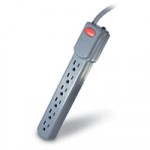Are certain applications running slowly occasionally? Sometimes things are superfast and then they slow to a crawl. What’s going on?
First of all – do all you can to ensure the environment is configured according to established Best Practices. One of the benefits of VMware’s acquisition of the Zimbra email / collaboration server software is that they need to ensure users optimize the deployments on their Hypervisor. This document here covers the main settings to check on a Virtual Machine that needs to perform well under load: http://iben.users.sonic.net/wp//2011/05/performance-recommendations-for-virtualizing-anything-with-vmware-vsphere-4/
Any tool that uses SNMP to gather performance metrics can be used to baseline and stress test infrastructure and determine where the bottle necks are.
Basic methodology could go something like this…
1 – identify end to end system components from end user terminal through network to virtual machines, esx hosts, and storage.
2 – configure SNMP for all devices (keep in mind that the latest ESX/ESXi vSphere versions don’t have many performance counters exposed via SNMP and you’ll need to use their APIs)
3 – verify use patterns and confirm data collection over time (1 week or month). Tune alerts for normal use.
4 – schedule stress test for each component to determine performance ceiling and baseline throughput capacity.
5 – make changes as needed to improve end user experience.
6 – verify changes had desired effect.
Performance Troubleshooting for VMware vSphere
vsphere4-performance-troubleshooting.pdf (2.1 MB)
http://communities.vmware.com/docs/DOC-10352
Possible tools that could be used to poll for performance metrics include:
http://www.scriptlogic.com/Products/perspective/
http://www.vizioncore.com/products/vFoglight/features.php
http://www.whatsupgold.com/technology/network-management/monitoring-technologies/index.aspx
http://www.quest.com/Quest_Site_Assets/PDF/DSA-FoglightNetworkDevice-US-VC.pdf
http://network-optimisation.com/technology/network_monitoring/snmp_monitoring.php
http://www.microsoft.com/systemcenter/operationsmanager/en/us/default.aspx
http://www.manageengine.com/products/opmanager/index.html
http://www.managementsoftware.hp.com
http://www.solarwinds.com/products/orion/modules.aspx
http://www.veeam.com/vmware-esx-monitoring.html
http://www.monitorsnmp.com/
http://www.cisco.com/en/US/tech/tk869/tk769/technologies_white_paper09186a008011fde2.shtml
http://www.sage.org/lists/sage-members-archive/2002/msg01878.html
Do you know of a tool that should be added to this list? Please send it to me.

